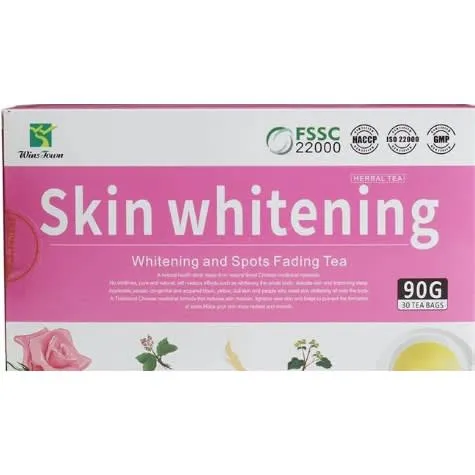Coca-Cola for Skin Whitening Top 5 Facts
The pursuit of flawless skin is a timeless endeavor, with people often exploring various methods to achieve a brighter, more even complexion. Among the many unconventional approaches, the idea of using Coca-Cola for skin whitening has gained some attention. While the concept might seem unusual, it’s essential to examine the facts and understand the potential effects and risks involved before considering such a method. This article delves into the top 5 facts surrounding the use of Coca-Cola for skin whitening, offering insights into its chemical composition, exfoliation properties, common myths, potential side effects, and safer alternatives.
Fact 1 Coca-Cola’s Chemical Composition
Coca-Cola’s formulation is complex, but two key components are of interest when discussing its potential effects on the skin citric acid and phosphoric acid. These acids are present in varying concentrations and contribute to the drink’s characteristic taste and properties. Citric acid, in particular, is known for its mild exfoliating properties. However, the concentration of these acids in Coca-Cola is relatively low, and their impact on skin whitening is not directly comparable to that of professional treatments or dedicated skincare products. It’s important to consider the overall composition, as other ingredients might counteract any potential benefits or introduce risks.
Understanding Citric Acid

Citric acid is a common ingredient found in many skincare products, often used for its exfoliating and brightening properties. As a member of the alpha-hydroxy acid (AHA) family, citric acid can help to remove dead skin cells, revealing a fresher layer of skin underneath. This exfoliation can lead to a brighter complexion and a more even skin tone over time. However, the concentration of citric acid in Coca-Cola is far less than that in skincare products designed for this purpose. Therefore, the effectiveness of Coca-Cola as an exfoliant is significantly limited. Furthermore, the presence of other ingredients in Coca-Cola may counteract the benefits or introduce potential irritants.
Fact 2 Exfoliation Properties of Coca-Cola
Due to the presence of citric acid, Coca-Cola does have some exfoliating properties, although they are very mild. Exfoliation is a key process in skin care, as it removes dead skin cells, unclogs pores, and promotes cell turnover, leading to smoother and brighter skin. In theory, the citric acid in Coca-Cola could contribute to this process. However, it’s crucial to note that the strength of this exfoliation is minimal. Compared to professional exfoliating treatments or even over-the-counter products, Coca-Cola offers very little in terms of significant exfoliation. Over-reliance on Coca-Cola for this purpose could lead to disappointing results and potentially expose the skin to other risks.
The Role of Alpha-Hydroxy Acids
Alpha-hydroxy acids (AHAs) are a group of natural acids commonly used in skincare to exfoliate the skin. They work by weakening the bonds that hold dead skin cells together, allowing them to shed more easily. This process reveals a layer of newer, brighter skin. Citric acid is a type of AHA. However, the effectiveness of an AHA depends on its concentration and the formulation of the product. In Coca-Cola, the AHA content is low, and the overall formulation is not designed for skin care. As such, the exfoliating benefits are negligible compared to products specifically created for this purpose. Using Coca-Cola as an exfoliant might not yield the desired results and could also pose risks due to other ingredients.
Fact 3 Coca-Cola and Skin Lightening Myths

There are various myths and misconceptions surrounding Coca-Cola’s ability to whiten skin. Many of these claims are based on anecdotal evidence and not supported by scientific research. Some people believe that the acids in Coca-Cola can lighten skin, but this is an oversimplification. While the drink might provide a temporary brightening effect due to its exfoliating properties, it does not contain any ingredients that can permanently change skin pigmentation or directly lighten the skin. The belief that Coca-Cola can whiten skin often stems from a misunderstanding of how skin lightening products work and the specific chemical compounds needed to affect melanin production.
Debunking Common Misconceptions
One of the most common misconceptions is that Coca-Cola acts similarly to skin-lightening creams. Skin-lightening creams usually contain active ingredients like hydroquinone, kojic acid, or arbutin, which are specifically designed to reduce melanin production. Coca-Cola does not contain these ingredients, so it cannot directly lighten the skin. Another misconception is that the sugar and other ingredients in Coca-Cola are beneficial for the skin. In reality, the high sugar content can potentially lead to issues like inflammation, which may worsen skin conditions. It’s important to approach claims about Coca-Cola’s skin-whitening properties with skepticism and to rely on evidence-based skincare practices.
Fact 4 Potential Risks and Side Effects
Using Coca-Cola on the skin can pose several potential risks and side effects. The high sugar content can attract bacteria and lead to breakouts or worsen existing skin conditions. The acids in Coca-Cola, although mild, can irritate the skin, especially for individuals with sensitive skin. This irritation may manifest as redness, itching, or dryness. Prolonged exposure to Coca-Cola, especially in the sun, can also increase the skin’s sensitivity to UV rays, potentially leading to sunburn or other sun-related damage. It is essential to consider these risks carefully before applying Coca-Cola to the skin, and to perform a patch test to assess the skin’s reaction.
Skin Sensitivity and Reactions

Individuals with sensitive skin are particularly vulnerable to adverse reactions when using Coca-Cola. The acids and other ingredients can disrupt the skin’s natural barrier, leading to irritation, inflammation, and even allergic reactions. Symptoms might include redness, swelling, itching, burning, or a rash. Moreover, the sugar in Coca-Cola can create an environment conducive to bacterial growth, which may result in acne or other skin infections. Before using Coca-Cola on the skin, it is advisable to conduct a patch test on a small area to see how your skin reacts. If any adverse reactions occur, it’s best to avoid using Coca-Cola and consult a dermatologist.
Fact 5 Safe Alternatives for Skin Whitening
For those seeking skin whitening or brightening, several safer and more effective alternatives are available. These options are formulated specifically for skincare and are backed by scientific research. Using products containing ingredients like vitamin C, niacinamide, or AHAs in appropriate concentrations can help to brighten the skin and reduce the appearance of dark spots and hyperpigmentation. Regular exfoliation with gentle scrubs or chemical exfoliants can also contribute to a brighter complexion. It’s crucial to choose products that are suitable for your skin type and to follow the instructions carefully. Furthermore, consulting a dermatologist can help to determine the best skincare regimen for your individual needs.
Exploring Natural Remedies
In addition to commercially available products, some natural remedies can help brighten the skin. Ingredients such as lemon juice, honey, and turmeric are often used in DIY skincare treatments. Lemon juice contains citric acid and can act as a mild exfoliant, while honey has moisturizing and antibacterial properties. Turmeric contains curcumin, which has antioxidant and anti-inflammatory effects. However, it’s important to use these remedies with caution, as they can sometimes cause irritation or allergic reactions. Always perform a patch test before applying them to a larger area of skin, and be mindful of the potential for sun sensitivity. For more significant results, consider consulting a dermatologist for personalized skincare recommendations.
In conclusion, while the idea of using Coca-Cola for skin whitening might seem intriguing, it’s important to approach it with caution. The potential benefits are minimal, and the risks, including irritation, breakouts, and increased sun sensitivity, can outweigh any perceived advantages. Safer and more effective alternatives exist, including skincare products with scientifically proven ingredients and natural remedies used with care. Always prioritize skin health and consult a dermatologist when in doubt. Making informed choices based on scientific evidence is the key to achieving a healthy and radiant complexion.
